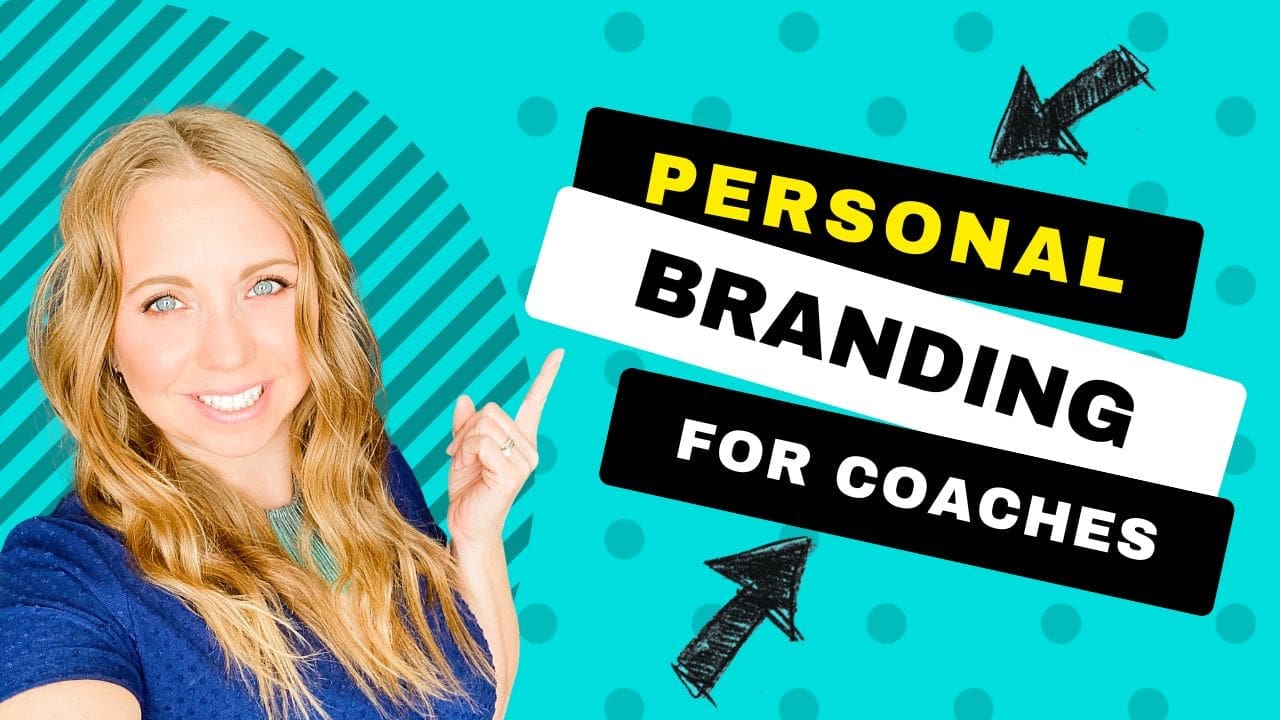How Do You Brand a Small Business?
How to do Small Business Branding
It’s no secret that branding is important for big businesses. Big businesses spend millions of dollars on branding and advertising to make sure their name is top of mind for consumers.
But what about small businesses? Is branding important for them too?
The answer is yes!
Why branding is important for small businesses
Branding is just as important for small businesses as it is for big businesses. In fact, branding maybe even more important for small businesses.
That’s because branding can help small businesses to:
- Stand out from the competition
- Attract more customers
- Build loyalty and repeat business
- Increase customer lifetime value
- Boost profitability
As you can see, there are plenty of good reasons to invest in branding for your small business. But what does branding involve? And how do you brand a small business?
What is branding?
Branding is the process of creating and establishing a unique identity for a business. It’s about more than just having a great logo (although a strong logo is certainly part of branding).
The branding process involves everything from the way your business looks and feels, to the way you communicate with your customers.
RELATED: What is Branding?
You may have thought a brand wasn’t important, and that may be because of some brand myths that are out there, but it’s time to bust them for good right now.
Brand Myths Busted
There are a lot of myths about branding, which can hold small business owners back from taking branding seriously.
💥 Let’s bust a few of those myths right now so you can build a successful brand.
Myth 1: Branding is expensive
One common myth about branding is that it’s expensive. And yes, branding can be expensive if you hire a big branding agency to do everything for you. But it doesn’t have to be.
There are plenty of DIY branding options available, such as using free logo makers and design tools. You can also create your own marketing materials using templates to get you started.
Plus, there are many low-cost brand strategies you can implement yourself, such as content marketing and social media marketing. A fancy design agency isn’t the only option for your business.
So branding doesn’t have to break the bank.
Myth 2: Branding is only for big businesses
Another common myth about branding is that it’s only for big businesses.
🤯 This simply isn’t true.
As mentioned above, branding can be just as important (if not more important) for small businesses. That’s because a strong brand can help small businesses to stand out from the competition, gain loyalty from existing customers, boost customer engagement, and attract new customers.
So stop thinking building a brand isn’t for the small business owner; it absolutely is!
Myth 3: Branding is a one-time thing
Another myth about branding is that it’s a one-time thing. Once you’ve created your logo and designed your website, that’s it, right? Wrong!
Branding is an ongoing process. Your brand should evolve over time as your business grows and changes. For example, you may need to update your logo or website design as your business grows.
You should regularly review your branding to make sure it’s still relevant and effective.
How to Brand a Small Business
Now that we’ve busted some common brand myths, let’s take a look at how you can brand your small business:
Creating a brand for your small business
If you want to create a strong brand for your small business, there are a few things you need to do:
- Define your company’s mission and values
- Create a strong logo and brand that represents your company
- Develop a marketing strategy that targets your ideal customer
- Create helpful content for your website and blog
- Promote your brand using online and offline marketing
- Invest in advertising to reach more of your target customers
We’ll take a closer look at each of these branding tips for small businesses in the sections below.
1. Define your company’s mission and values
Before you can start branding your small business, you need to know what your brand is all about.
- What is your company’s mission?
- What are your core values?
- What unique value do you provide?
Once you have answers to these questions, you can start to create a branding strategy that reflects your company’s unique identity and helps you stand out even in a saturated market.
2. Create a brand identity that represents your company
Your logo is one of the most important elements of your brand, and it begins the solid foundation of your brand. It’s the first thing people will see when they come across your business, so it needs to make a good impression.
🎯 Create a Logo
When creating a logo, keep it simple. Use clean lines and shapes, and avoid using too many colors. And make sure your logo is easy to read, even when it’s displayed at small sizes. Think about how small your logo is displayed on your website or on social media on a phone.
Be sure it is readable and recognizable even at that small size. If you’re going to have your logo on large signage or even on a vehicle, be sure it works at that scale as well.
Also, avoid using clip art or stock images. And make sure your logo looks good in both color and black and white.
It is also helpful to have several versions of your logo for different placements.
I always create a square version for social media and a horizontal version for a website header. Think of other formats you may need for your logo.
🎯 Create a style guide
Once you’ve designed your logo, it’s a good idea to create a style guide. This will help to ensure that your brand is consistent across all of your marketing materials. This can be as simple or as complex as you need it.
Your style guide should include things like your color palette, font choices, and brand guidelines. These style and branding guidelines should be shared with your in-house team and anyone creating marketing materials or visual elements for your business.
🎯 Design your website
Your website is another important element of your brand. It’s often the first place people will go to learn more about your business, so it needs to make a good impression. When designing your website, keep things simple and easy to navigate.
Your web design should use clean, easy-to-read fonts and have plenty of whitespace. And make sure your website is mobile-friendly, as more and more people are now using their smartphones and tablets to browse the web.
Your brand is not your logo
Remember your brand extends beyond your logo to the overall look, feel, and tone of your business. This includes everything from the colors you use on your website to the way you answer the phone.
The Key To A Successful Brand
Consistency is key when it comes to brand, so make sure all your brand elements work together to create a cohesive look and feel for your business.
3. Develop a marketing strategy that targets your ideal customer
Once you’ve defined your brand and created strong branding for your small business, it’s time to start marketing to your ideal customers.
To do this, you need to develop the right marketing tactics that target the right people with the right message. To start this process answer these questions:
- What are the demographics of your ideal customer?
- Where do they hang out online?
- What kind of messaging will resonate with them?
Answering these questions will help you to develop a strategy that effectively reaches your potential customers.
4. Create helpful content for your website and blog
Your content strategy is a key part of your brand, as it’s one of the best ways to communicate with your audience. When writing content, make sure it’s interesting, informative, and engaging. Avoid using jargon or difficult words.
✔️ And make sure to proofread your content before you publish it, as errors can make your business appear unprofessional.
Your content could be anything from in-depth articles and tutorials to downloadable ebooks and infographics. Make sure all of your content and promotional materials follow your style guide and brand strategy and have consistent messaging.
Be sure to include calls to action that encourage your readers to take the next step, whether that’s signing up for your email list or visiting your store.
5. Promote your brand
Once you’ve designed your logo, created your style guide, and built your website, it’s time to start promoting your brand.
There are lots of ways to do this, such as content marketing, social media marketing, and email marketing.
Use Social media marketing to promote your brand
Use social media to reach new customers and build relationships with current customers.
Social media is a powerful branding and marketing tool for small businesses. It can help you to reach new customers, as well as build relationships with your current customers.
When using social media for branding, it’s important to post consistent, high-quality content. You should also interact with your followers on a regular basis, responding to comments and questions in a timely manner.
RELATED: What Social Media Platform Is Best For Small Businesses?
6. Invest in advertising to reach more people in your target market
Investing in advertising is another great way to reach more people in your target audience. There are a number of different advertising options available, from online ads to print ads and everything in between.
When choosing an advertising platform, it’s important to consider where your target audience spends the majority of their time. For example, if your ideal customer is on Facebook, then investing in Facebook ads might be a good option for you.
TIP: Keeping up Your Brand
In branding strategy, it’s important to remember that your brand is an ongoing process. So don’t be afraid to review your brand periodically and make changes as necessary.
Whether you’re just starting a new business or you’re a seasoned vet, your brand strategy is important.
By following these branding tips for small businesses, you can create a strong brand that will help you to reach your target market, grow your business, and achieve your business goals.
Want to learn more about what you need to consider when starting your new business? Keep reading here.
Small Business Branding FAQs
1. How much does branding cost?
The cost of branding can vary depending on the size and scope of your project. For a small business, branding might include creating a logo, developing a style guide, and creating marketing collateral.
The cost of these services can range from a few hundred to a few thousand dollars, depending on if you use a freelance graphic designer, a boutique marketing agency, or a branding agency. A branding agency may be more than a small business needs, but it all depends on your budget.
RELATED: Graphic design for non-designers
2. What are some branding ideas for small businesses?
Some brand ideas for small businesses include:
- Creating a strong visual identity by developing a professional logo and consistent brand colors
- Developing key messaging that articulates what your business does and how it benefits your customers
- Creating marketing collateral such as your business card, flyers, and website graphics that reflect your brand
- Building an online presence through social media and a website that showcases your brand
3. How can I make sure my small business branding is successful?
There are a few key things you can do to ensure your small business branding is successful:
- Develop a clear understanding of your target audience and what they are looking for
- Create messaging that resonates with your target audience and sets you apart from your competition
- Build a strong visual identity that is professional and consistent across all touchpoints
- Make sure your online presence is strong and up-to-date, with fresh content that showcases your brand personality
- Be proactive in promoting your brand through marketing and PR initiatives.
- Create brand consistency across all of your marketing messages, marketing strategies, and on all social media platforms.
4. How do you build a small business brand?
There’s no one-size-fits-all answer to building a small business brand, as the best way to build a small business brand will vary depending on the individual business and what brand goals they hope to achieve.
However, some tips on how to build a small business brand include:
- creating a strong visual identity and brand personality
- developing key brand messaging that differentiates your business from others
- engaging in consistent brand voice across all marketing efforts.
5. Do small businesses need a brand strategy?
While there is no requirement that small businesses must engage in branding efforts, small business branding can be beneficial for those hoping to build awareness and brand recognition for their business.
A strong brand strategy can help your target audience remember your business and what it stands for, which can ultimately lead to increased sales and growth.
6. How do I create a logo for my business?
There are a number of ways to create a logo for your business, including hiring a professional designer, using a logo design tool or template, or creating one yourself.
Some options for logo design:
- 99Designs
- Fiverr
- A marketing agency
- A Freelancer
- Design Yourself – Canva, Envato Elements, Creative Market
When creating a logo for your business, there are a few things you’ll want to keep in mind.
First, consider what sort of message you want your logo to communicate about your business.
Second, make sure the design is simple and easy to understand; it should be something that can be quickly and easily recognizable.
Third, consider making your logo versatile so that it can be used in a variety of marketing efforts and across various platforms.
And finally, don’t forget to have fun with it! Creating a logo for your business should be an enjoyable process.
7. What are the 4 steps of branding?
Some key steps that are often involved in small business branding include:
- Creating a strong visual brand identity,
- Developing key messaging,
- Engaging in consistent branding across all marketing efforts
- Measuring/assessing results to ensure effectiveness.
8. What comes first, marketing or branding?
Branding comes first; marketing comes second.
Branding establishes who you are as a company. It’s your identity, and it’s how customers will perceive you. Marketing is what you do to reach your target audience and promote your brand.
It’s the strategy and execution that will get you noticed and generate leads.
A strong brand will make marketing more effective because people will already have a positive association with your company. But without marketing, your brand will never reach its full potential.
So it’s important to have a coordinated approach that incorporates both branding and marketing efforts.
Want to Learn More About branding and marketing for small business?
Want to learn more about brand marketing and digital marketing for your business? Keep reading here.
About Digital Marketing Expert Torie Mathis
 Torie Mathis helps entrepreneurs, like you, use digital marketing to grow your business without wasting time, money, or your sanity. She is a best-selling author, Army veteran, speaker + trainer, and your digital marketing coach. You don't need crazy tech skills, buckets of cash, or dedicated staff to market your business. In fact, you don't even need a lot of time. What you need is to be SMART.
Torie Mathis helps entrepreneurs, like you, use digital marketing to grow your business without wasting time, money, or your sanity. She is a best-selling author, Army veteran, speaker + trainer, and your digital marketing coach. You don't need crazy tech skills, buckets of cash, or dedicated staff to market your business. In fact, you don't even need a lot of time. What you need is to be SMART.
Torie hosts SMART AF, a show for non-techy entrepreneurs looking to grow their business, with her husband Sean and is the creator of SMART AF Magazine. Learn from Torie at the Smart Arsenal and on her channel.
What do you think? Let's talk! Leave a comment.
YOU MAY ALSO LIKE
Hi! I'm Torie!
 I help entrepreneurs (like you) use digital marketing to get more clients + make more money. And I make it easy!
I help entrepreneurs (like you) use digital marketing to get more clients + make more money. And I make it easy!
You don’t need crazy tech skills, buckets of cash, or dedicated staff to market your business. You don’t even need a lot of time.
What you need is to be SMART.
Smart Marketing For
Get Smart AF
DELIVERED TO YOUR INBOX
from your Digital Marketing Coach Torie Mathis!
Let's get SMART!
Let's Connect!

*Posts may contain affiliate links. If you use these links to purchase, I may earn a commission at no additional cost to you.



 I help entrepreneurs learn digital marketing.
I help entrepreneurs learn digital marketing.












Quite frankly, I think that branding makes a huge difference for successful development of your business and for demonstrating its uniqueness. From my point of view, branding helps you show potential customers that you are an established and trustworthy business. Of course, there are a lot of myths regarding branding and people are really often guided by the wrong idea of it. It is so cool that you revealed these myths because branding can yield huge results to your business if you use it in a smart way. Without any doubts, it is the most widespread myth that branding is expensive, but people don’t need to have such an one-sided view on it and it is important to understand that you can always find some alternative options, getting necessary results. Also, I can’t understand why a lot of people think that branding is only for big businesses because often several small businesses fail because they neglect the importance of branding. Branding helps to increase your brand awareness and because of this, it is necessary for any enterprise.
Thanks Marina, I wish more small businesses would see the importance of branding and understand it’s within their reach. 🙂
Branding involves extensive planning. You need to make time for proper research and careful planning. Although consistency is the core of branding, you need to be able to find ways to keep your brand relevant. People’s perception of your brand can dictate what actions they do or do not take.